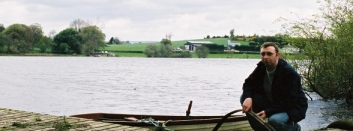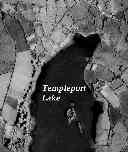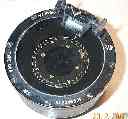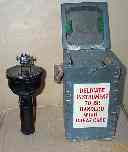Bristol Beaufighter JL710, Bawnboy Cavan, 1943
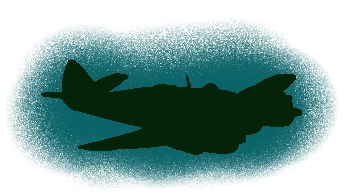 Late on Saint
Patrick's night 1943, the area round Bawnboy, County Cavan
received some very unexpected visitors.
Late on Saint
Patrick's night 1943, the area round Bawnboy, County Cavan
received some very unexpected visitors.
The village of Bawnboy in Cavan is situated about two miles
north of Templeport Lake, in which lies Saint Mogue's Island. On
that evening, March 17th 1943, as the residents of the area
prepared for the evening celebrations the quiet was shattered by
the sound of the twin Bristol Hercules engines of an RAF Bristol
Beaufighter.
This Beaufighter found itself lost over the border area of County Cavan in Ireland and County Fermanagh in Northern Ireland. The RAF crash report recorded that it's pilot hatch blew open and the maps were sucked out. Flying from Port Ellen, Islay in Scotland, the two crew of 304 Ferry Training Unit (FTU) abandoned their aircraft close to the border. Their stricken fighter bomber flew on until impacting next to Saint Mogue's Island.
In 2004 I was contacted by two locals from the area of Bawnboy, inquiring if I might have more detailed information. Nigel, a Templeport resident, told, "I live very near St Mogue's Island and as a child in the fifties and early sixties used to love rowing to the island when the lake was low and finding pieces of the plane. Of course most of it had been taken away by the Irish Army very soon after the accident and there were only pieces of aluminium cladding, spars and other small pieces of twisted metal left to find. Many people at the time used to feed their chickens off pieces of the flat sections. It is still possible to find pieces of aluminium in the water although tourists have found and taken away most of them now".
He continued, "Many local people remember the crash and hearing the plane circling for ages. Some thought they were going to be bombed! Just before the crash a local woman heard a bang on the roof of her house about a mile and a half away. She thought a bomb had been dropped which hadn't exploded. Some days later, she had a man go up on the roof to investigate. He found a wooden box, painted RAF Blue, which he took down. It contained a 'Hand bearing compass', known as a Type 06A. The 06A compass handle contains a torch, which may be used independently but when normally screwed to the base of the compass illuminates the rose for taking night bearings through the prism. On the inside of the hinged lid of the box there is a rubber stamped mark indicating that the compass was checked at the Admiralty Compass Observatory on 30 May 1942. As I had always coveted the compass, the woman, who had been a family friend who had known my great grandparents, gave it to me sometime in the late sixties."
Aidan McGovern of Kildough told his neighbour Nigel in March 2004 that in March 1943 he was a young adolescent confined to home because he wasn't well. His home is within a short distance of St. Mogue's Island and very close to where the council boat, or (Erne type) cot as it was then, was kept to carry the funeral corteges out to burials on St. Mogue's Island.
On St Patrick's night 1943 there was a Parochial dance in the hall of the workhouse in Bawnboy and an aeroplane was heard circling progressively lower, making circles of about five miles diameter between Corlough and Templeport. After the noise of the circling plane ceased abruptly many of the revellers realizing that it had crashed went searching and some were nearly lost on Gowlagh bog where they thought the aircraft had come down.
Aidan's father Michael was visiting Rector Armstrong at the Rectory and was about to leave for home at 11 o'clock when the plane flew very low over Corboy Hill. It crashed in the water with a very loud explosion and flash slightly to the North of St. Mogue's Island but just short of the adjacent island. Aidan's father and the rector took the Rector's boat out in the dark to the crash location and attempted to look for survivors but as calling didn't elicit any response and the search in the dark was abandoned due to the smell of petrol and the danger of fire.
The next morning the Garda (police) arrived and shortly after security was taken over by the Irish Army who brought in a raft to remove all they could. Security was very tight and no local people were allowed near the crash site. The operation took up to three weeks during which time he remembers having some of the soldiers billeted in the family home. They slept beside the fire in the kitchen/living room in their own sleeping bags. At one stage Aidan was shown the belts of 20mm machine gun ammunition, every second shell of which was a tracer. He particularly remembers one of the propellers with yellow tipped blades, which weighted about six stone was around his house for many years, but, regrettably it may have been put into the foundations of their new house, built in the late fifties?.
Another local resident David Breiden of Ballyconnell remembers watching from the window in his school classroom the boats and raft going to and back from the Island when the army were recovering whatever they could. When asked about the dance in Bawnboy he told that he thought there was another dance in Templeport Hall on the same night. Since St Patrick's day would have been a public holiday and as dance halls were small and most people had to walk or cycle it would have been very probable that dances were held in both locations. He was only eleven and would have been too young at the time to attend dances!
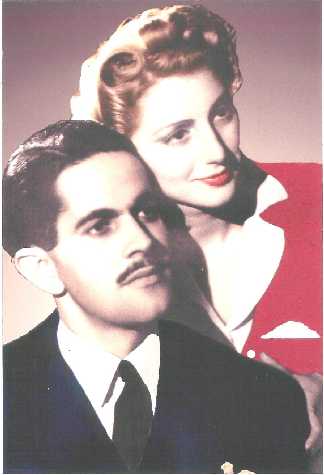
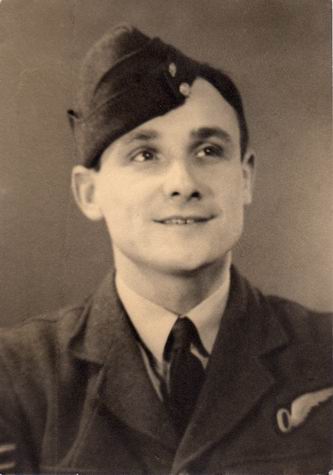 Both of the crew had bailed out over
Ireland and landed in the locality. The story of F/O Richard
Kukura and Fl/Sgt. Tommy Hulme and their subsequent short
adventure were thus the subject of Nigel and John's quest! That
quest was to find success over the next three years.
Both of the crew had bailed out over
Ireland and landed in the locality. The story of F/O Richard
Kukura and Fl/Sgt. Tommy Hulme and their subsequent short
adventure were thus the subject of Nigel and John's quest! That
quest was to find success over the next three years.
Following the kind suggestion of Second World War Crash researcher and author Dave Earl, a query was placed with the RAF Museum, Hendon in London. Following the resolution of the April 2004 postal strike! I was delighted to receive from RAF Hendon a copy of the Form 1180 crash report for JL710. A study of this report gives the following information. The aircraft is given as a Beaufighter, serial number JL710, powered by two Bristol Hercules IV engines. Bruce Robertson's, 'British Military Aircraft Serials' and Richard A Frank's 'Bristol Beaufighter' list this as a Beaufighter Mk. Vic built at Old Mixon, Weston-super-Mare. Details of the crash are given in a handwriting, which are difficult to decipher but which seem to indicate that the cockpit hatch was lost and the crew became disorientated. Most interestingly for me however, the pilot was listed as an Australian! Many hundreds of Australian airmen served with Royal Australian Air Force (RAAF) and RAF squadrons in Europe during the war. A quick search of the Australian Government Nominal Roll confirmed the serial number and name, Richard Kukura (415155).
Shortly thereafter, one more of our intrepid research group happened to find, quite by accident, a woman of the same surname as our pilot searching for her ancestors on a genealogy forum. By some fluke we had found a non other than the pilot's nephew's wife! It was a double surprise to learn that Richard was alive and well and living with his wartime bride, Olga. Since that time, Nigel in Bawnboy has been in touch with the Kukura's. Richard was able to provide to Nigel a vivid description of that night. Unfortunately, Tommy, the navigator of the aircraft, had passed away in 1995. Our attempts at finding Tommie's family seemed to be coming to naught when out of the blue in May 2006, who should make contact with Nigel but Tommy's daughter Liz!
Nigel has been able to compile an excellent web site telling the story of the aircraft's crash and it is with delight that I can now finally direct visitors to that page! Read on and enjoy! Click on the image to visit his site.
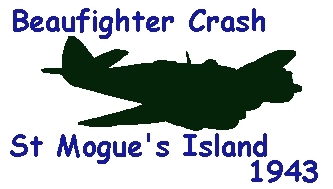
Richard Kukura passed away in 2009
A visit in October 2005 to the Irish Military Archives allowed me to view the Irish Army Intelligence File, on the incident. Unfortunately, the file is a little sparse because on the day after the crash in Cavan, a Liberator bomber landed in Donegal and the investigating officer had to make his way to that location to deal with the crew of seven on that aircraft. At the time that the report was filed, it was recorded that the crew had landed after baling out in Northern Ireland. The aircraft was described as having crashed "Into a harbour of a small island and was completely wrecked" having blown up on impact, with the wreckage lying about 100 yards from the shore. The fuselage was said to be blocking the way to the graveyard, there being a graveyard on the island with the remains of a church. Local boats were reported to be unsuitable for accessing the wreckage.
With the departure of this officer, the file contains little else regarding the clear up operation mounted by the defence forces. However, based on the reports from Aidan McGovern and also from my introduction to this gentleman in May 2006, it appears that there was a salvage operation, carried out perhaps by Engineers from one of the nearby barracks. The crew may also have been Air Corps personnel. Aidan, remembers them using a barge to carry large pieces across to the shore. He remembered the thick rubber coating on the inside of the aircraft fuels tanks.
The story above is based on information received from Nigel and
John living in the area. Also, more details were gleaned from
the Irish Military Archives and from my visit to the area in May
2006 at the kind invitation of Nigel. If you can offer any help
or detail about this incident please contact the webmaster who
will pass on the information to all interested parties.
Nigel supplied links to the pictures of the island, compass and
box. Many thanks to Nigel, John and Dave Earl and
especially to Stephanie and Richard!. Also, thanks go to the
Irish Military Archives, RAF Museum Hendon, the many, many
people I contacted in Marple outside Stockport and also the
posters on Ross O'Neill's RAF Commands forum. I'm sure I have
left some one out there.
Wartime censorship meant that the event was not reported in the
local or national newspapers, however, the Anglo Celt did carry
this crpytic note in the days following the crash: "TEMPLEPORT NEWS: St. Mogues Island, in
Portlough, Templeport, had the greatest sensation of its
long existence early yesterday morning when men were seen
landing in safety after an exciting experience."
I can only conclude that this was a round about reference to
the nights aircraft crash.
Dennis Burke - Jan 2024 -
Back to the main crash listing.
|
For full
details of the research carried out in the Bawnboy
area Visit:
|
|
|
Please
click on the thumbnails for larger images.
|
|

